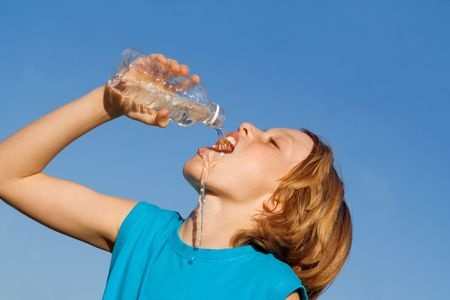Prevent Heat-Related Illness With Hydration, Plan of Action
By Jessa McClure

Summer seems to come earlier every year, especially in Texas, and that means spring sports and outdoor activities can quickly become dangerous in the oppressive heat. If that hot, sweaty feeling becomes something more dangerous like heat exhaustion, it can quickly develop into a heat stroke and can even be fatal.
This means coaches and caregivers need to be aware of the risks and the symptoms of heat exhaustion, and know what to do if a child succumbs to the heat.
"As a coach, I feel it is my responsibility to take care of the kids while they're on the field—whether that's during practice or a game," said McGregor Youth Baseball coach Chad Austin. "It's very important to me that I prevent as much [heat exhaustion] as possible and make sure the kids stay hydrated."

The Centers for Disease Control suggest drinking two to four glasses of cool fluid each hour to keep well hydrated. It might also be necessary to drink sports drinks that contain salt and minerals in order to replace what has been lost while sweating.
The CDC also suggests holding practices and games during the early morning or evening hours when the heat is not so intense. If this isn't possible, the health organization suggests limiting the amount of time athletes spend on the field during the hottest time of day and to encourage water breaks.
"Right now our games and practices are only an hour and we usually play games in the morning and the evening," Austin said. "Most of my T-ball kids bring their own drinks to practice and games, but if they ever came to me and wanted to get a drink or stop for a little bit because they were getting too hot; I wouldn't hesitate to let them take some time to cool off."
Another way to keep kids safe on the field or in the front yard, according to the American Academy of Pediatrics, is to have a plan of action if a child does become ill because of elevated temperatures.
"I think coaches should remember the kids' safety in everything they do," the T-ball coach said. "These kids are out there to learn and have fun and not to win state championships, so there's no need to push them to the max. I think the coach should provide a water jug and make sure he or she checks with the kids fairly often during a practice or a game to make sure they are doing okay."
Along with checking in with their pint-sized players, coaches and caregivers should also be able to recognize the signs and symptoms of heat exhaustion:
- Heavy sweating
- Weakness
- Cold, pale, and clammy skin
- Fast, weak pulse
- Nausea or vomiting
- Fainting
If your child or team member is exhibiting any of these symptoms, you should move them to a cool, shaded location, have them lie down, apply cold cloths to as much of their body as possible, and have them sip water. If they continue to vomit, have a high body temperature, or are unconscious, seek immediate medical assistance.
Back To Top

 The Centers for Disease Control suggest drinking two to four glasses of cool fluid each hour to keep well hydrated. It might also be necessary to drink sports drinks that contain salt and minerals in order to replace what has been lost while sweating.
The Centers for Disease Control suggest drinking two to four glasses of cool fluid each hour to keep well hydrated. It might also be necessary to drink sports drinks that contain salt and minerals in order to replace what has been lost while sweating.